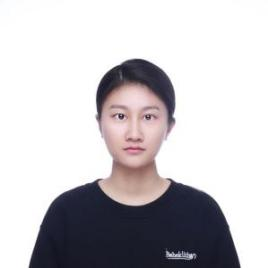
Yingchao Shi
Ph.D., Principal Investigator, Doctoral Supervisor
Email: shiyingchao@@gdiist.cn
Personal Profile
Dr. Yingchao Shi received her Ph.D. of Neuroscience from Institute of Biophysics, Chinese Academy of Sciences in June, 2018. Then, she successively worked as an assistant professor and an associate professor in the Institute of Biophysics, Chinese Academy of Sciences during 2018-2022. In Nov, 2022, she joined Guangdong Institute of Intelligence Science and Technology as a Principal Investigator. And she is a Member of the Youth Innovation Promotion Association of Chinese Academy of Sciences.
Lab of Neural Cell Atlas and Cognitive Network
The brain is the most complicated and poorly understood organ in our body. Deciphering the cellular structure and function of the brain is one of the most challenging scientific issues that need to be decoded in the 21st century. The intricate and well-organized brain activity is implemented based on the collaboration of various neural cell types as well as the precisely establishment of neural network. Systematically decoding the diversities of neural cell types, the gene expression features, the neuronal firing patterns as well as the connectivity patterns in neural network is the foundation for understanding advanced brain activities like cognition, idea, consciousness and language. Besides, this analysis also has great significance for unraveling the brain cellular constructions as well as its functions and is crucial for disclosing the pathogenic mechanism of numerous brain disorders and for probing the potential therapeutic targets.
Our group is mainly engaged in building up the neural cell atlas and cognitive network in human and mouse brains that covering the information of neural diversities, molecular features, neuronal firing patterns as well as neural connection patterns via adopting multiple experimental methods like single cell multi-omics, cellular and molecular biology, electrophysiology and ethology. What’s more, we also delicated on innovating the 3D culture of cerebral organoid, which is a wonderful in vitro cerebral model with similar cellular architecture and organization to human brains. Using this model, we can explore the biological processes like neurogenesis, neural migration and neural network building as well as the molecular mechanisms underlying brain disorders, which will provide an alternative way for deciphering the neural cell atlas and cognitive network in human and mouse brains.
Representative publications
(1) Yingchao Shi*, Mengdi Wang*, Da Mi*, Tian Lu, Bosong Wang, Hao Dong, Suijuan Zhong, Youqiao Chen, Le Sun, Xin Zhou, Qiang Ma, Zeyuan Liu, Wei Wang, Junjing Zhang, Qian Wu, Oscar Marín, Xiaoqun Wang. Mouse and human share conserved transcriptional programs for interneuron development. Science, 2021, 374: eabj6641.
(2) Yingchao Shi*, Le Sun*, Mengdi Wang*, Jianwei Liu*, Suijuan Zhong, Rui Li, Peng Li, Lijie Guo, Ai Fang, Ruiguo Chen, Woo-Ping Ge, Qian Wu, Xiaoqun Wang. Vascularized human cortical organoids (vOrganoid) model cortical development in vivo. PLOS Biology, 2020, 18: e3000705. (Selected as one of the 6 recommended articles from PLOS Biology Editor-in-Chief, 2020)
(3) Yingchao Shi, Qian Wu, Xiaoqun Wang. Modeling brain development and diseases with human cerebral organoids. Current Opinion in Neurobiology, 2020, 66: 103-115.
(4) Yingchao Shi*, Shihua Li*, Qian Wu*, Le Sun, Junjing Zhang, Na Pan, Qihui Wang, Yuhai Bi, Jing An, Xuancheng Lu, George Fu Gao, Xiaoqun Wang. Vertical transmission of the Zika virus causes neurological disorders in mouse offspring. Scientific Reports, 2018, 8: 3541.
(5) Congping Shang, Zhihui Liu, Zijun Chen, Yingchao Shi, Qian Wang, Su Liu, Dapeng Li, Peng Cao*. A parvalbumin-positive excitatory visual pathway to trigger fear responses in mice. Science, 2015, 348: 1472-1477.
(6) Zhihui Liu, Zijun Chen, Congping Shang, Fei Yan, Yingchao Shi, Jiajing Zhang, Baole Qu, Hailin Han, Yanying Wang, Dapeng Li, Thomas C. Sudhof, Peng Cao. IGF1-dependent synaptic plasticity of mitral cells in olfactory memory during social learning. Neuron, 2017, 95: 106-122.
(7) Xin Zhou, Yufeng Lu, Fangqi Zhao, Ji Dong, Wenji Ma, Suijuan Zhong, Mengdi Wang, Bosong Wang, Yuqing Zhao, Yingchao Shi, Qiang Ma, Tian Lu, Jun Zhang, Xiaoqun Wang, Qian Wu. Deciphering the spatial-temporal transcriptional landscape of human hypothalamus development. Cell Stem Cell, 2022, 29: 328-343.
(8) Xiaoqun Wang; Qian Wu; Yingchao Shi; One culture method for establishing striatal organoids, 2020-1-20, China, 202010062009.0 (Patent)




